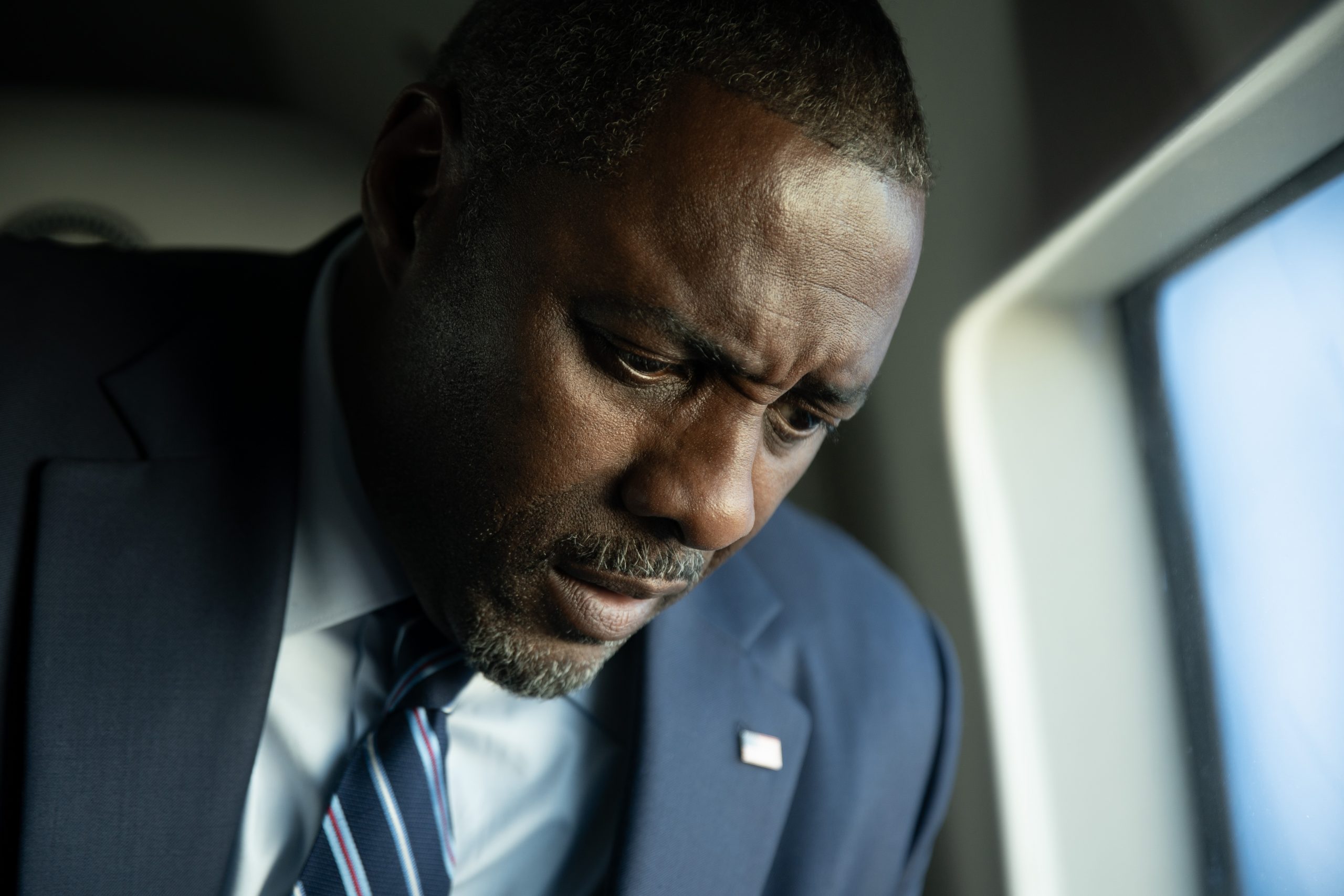Warning: This post contains spoilers for A House of Dynamite.
If the American government had less than 20 minutes to decide the fate of humanity in the wake of an unattributed nuclear missile being fired at the U.S., what would they choose to do?
This question supplies the premise of A House of Dynamite, a new military-industrial thriller from The Hurt Locker and Zero Dark Thirty director Kathryn Bigelow now streaming on Netflix, which been lauded by critics since its Venice Film Festival premiere. Almost the entirety of the nearly two-hour film unfolds over the course of that brief impact window, with the same roughly 18-minute interval playing out on screen three times over from the perspectives of different military and political officials.
[time-brightcove not-tgx=”true”]
A House of Dynamite opens with Captain Olivia Walker (Rebecca Ferguson), senior duty officer in the White House Situation Room, arriving for what she believes will be a routine day on the job, only to be notified of the missile launch and forced to leap into action to attempt to neutralize the threat. Meanwhile, at a missile-defense base in Fort Greely, Alaska, Major Daniel Gonzalez (Anthony Ramos) and his team are charged with firing two ground-based interceptors capable of destroying the incoming warhead, which has been determined to be inbound for Chicago. They fail to hit their target, an outcome we learn has a nearly 50 percent chance of occurring. Or, as Secretary of Defense Reid Baker (Jared Harris) puts it, “So, it’s a f-cking coin toss?!”
In the second act, we see the contrasting approaches to the situation presented by General Anthony Brady (Tracy Letts), the senior military officer at United States Strategic Command, and Deputy National Security Advisor Jake Baerington (Gabriel Basso). The former advises POTUS (Idris Elba) to execute an all-out blitz on all possible suspected nuclear powers while the latter advocates for him to stay his hand and do nothing. The final section of the movie then alternates between Baker, who is more focused on getting in contact with his Chicago resident daughter (Kaitlyn Dever) than offering his counsel, and the President, who has the ultimate say on the government’s course of action.
The perpetrator of the attack is also never identified, an ambiguity that screenwriter Noah Oppenheim (The Maze Runner, Jackie) said was intended to prevent any audience scapegoating. “[T]he entire world has built this system where we have nine nuclear countries,” he told Deadline. “We’ve got thousands of weapons, any one of which could go off at any given time, based on either the decision of an insane person in a leadership position or a mistake. So, we wanted to focus on the system, not any one bad actor or villain.”
How does A House of Dynamite end?
After being rushed away from a charity basketball event, our unnamed POTUS is handed the so-called Black Book and told by nuclear football handler Lieutenant Commander Robert Reeves (Jonah Hauer-King) that he must pick from a selection of retaliatory strike options. A House of Dynamite‘s president is presented as a seemingly measured and compassionate leader. And yet, that offers little to no comfort in the face of such catastrophic circumstances.
“That is the point we wanted to make,” Oppenheim told Deadline. “Even in the best-case scenario, if you had a president who is thoughtful, responsible, informed, deliberative—to ask someone, anyone, to make a decision about the fate of all mankind in a matter of minutes while he’s running for his life simultaneously is insane.”
Then, just as POTUS is about to announce his choice, the screen cuts to black and the credits roll, leaving the question of what’s to come deliberately unanswered. In some ways, it seems fitting to be left with our own musings on how we believe the government should respond to such an unthinkably dire crisis. But in the wake of that buildup, the film’s shockingly anticlimactic ending also feels like somewhat of a cop-out.
From a pure entertainment value standpoint, we’ve just sat through two of the tensest hours of filmmaking released this year. After all that, we don’t get the satisfaction of things being tied up neatly, on one hand, or the dread-inducing finality of a big explosion, on the other. Thanks to disaster movies of the past, we’ve been trained to expect at least our hero to make it to the other side, even if there are casualties along the way or the world order requires rebuilding. With A House of Dynamite, there is no such catharsis. There’s not even a hero.
Read More: Kathryn Bigelow’s A House of Dynamite Is Skillful, Stressful, and Urgent
Impactful restraint, or frustrating lack of resolution?
A House of Dynamite clearly has a point to make about the fragility of a system that relies on mutually assured destruction as a deterrent, particularly in today’s increasingly turbulent political climate. However, it ultimately opts not to take a definitive geopolitical stance beyond the ideas that decision-makers are woefully underprepared to handle such a moment in a non-theoretical situation and nuclear armageddon would be capital-B Bad. Challenging viewers to reflect on the perpetual war-like state of our world is all well and good. But should the existential burden of the ways in which the most powerful people on Earth might choose to destroy us really be ours to bear?
For Bigelow’s part, the answer seems to be yes. In an interview with the Bulletin of the Atomic Scientists, she described the film’s cliffhanger as a call to action. “I felt like the fact that the bomb didn’t go off was an opportunity to start a conversation,” she said. “I’d like to see people decide they don’t want to live in a world that’s this volatile or this combustible. And then of course, the next step is to reach out to their representatives and try to, you know, create a movement.”

